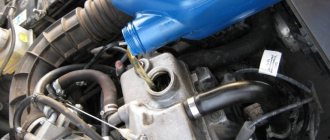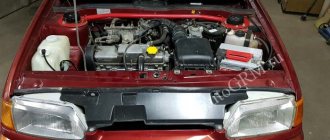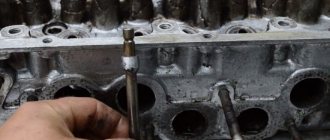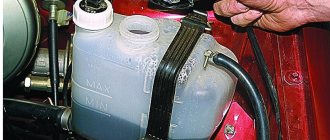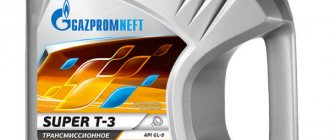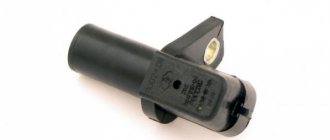“Fourteenth”, despite the fact that it has an outdated design, is still in demand by domestic drivers. Therefore, future owners of this car are interested in how much horsepower the VAZ 2114 has and which engine is best to get it with. Over its history, the car was produced with different types of power units of varying power. In this article we will tell you what engines this car was produced with, and also analyze their strengths and weaknesses, fuel consumption and acceleration.
8 valve engine 1.6
The 1.6-liter engine with 8 valves also began to be installed in 2003, that is, from the first years of production. The last such “four” rolled off the assembly line in 2013. Fans of the model are interested in how much horsepower the VAZ 2114 (8 valves) has with an engine of this size.
This power unit has a power of 89 horses . It is slightly more powerful than a 1.5 liter engine. But it is advisable to use AI-95 gasoline for it.
True, many owners fill in AI-92, which does not harm the car at all. The car is very economical. In the combined cycle, its fuel consumption is about 7.5 liters per hundred kilometers. And it accelerates to 100 km/h in 13 seconds. Since 2010, AvtoVAZ began installing an electronic gas pedal on this modification. But this innovation was not warmly received by all car enthusiasts. Fuel injection has also been improved in connection with new environmental standards. Fans of the model also have an ambivalent attitude towards this change.
Frequent internal combustion engine malfunctions
Let us immediately note that the design of the VAZ 2114 and the engines in particular on this model may have a number of differences. Early versions are simpler, while in the latest modifications the unit received more complex electronic equipment, ECM sensors, etc.
One way or another, most of the problems that the 2114 engine can present:
• the “check” light is on, the speed fluctuates; • the motor does not develop power; • the power unit stalls, stalls or does not start; • extraneous noises and knocks appeared in the engine;
As with any other fuel-injected internal combustion engine, it is necessary to perform engine diagnostics, since there are many possible reasons why failures occur.
For example, the failure of one of the ECM sensors may result in the ECU receiving incorrect data and the controller going into emergency mode. You also need to pay attention to timing, valve adjustment, etc.
If we consider the VAZ 2114 engine itself, its repair is not very different from the repair of the VAZ 2108 engine. In turn, this allows experienced car owners to repair the specified internal combustion engine with their own hands.
16 valve engine 1.6 (SuperAuto)
Not everyone knows, but 2114 also has a special SuperAuto series. A small number of these cars were produced. They are distinguished by improved driving performance and dynamic characteristics.
Under the hood of this car there is a 1.6-liter engine with 16 valves. It produces a power of as much as 92 hp , which is quite good for this model. Combined with the light weight of the car, this made it much faster. The car accelerates to 100 km/h in 11.2 seconds.
AI-95 fuel is recommended for this engine. But some drivers use AI-92. For a hundred kilometers, such a car requires approximately 7.2 liters of gasoline.
The main mistakes made when tuning
Many people try to add power to the engine, but at the same time make typical mistakes. The leading ones among them are:
- installation of cutters in garage conditions (this work requires high precision);
- use of unnecessary and expensive spare parts;
- lack of suitable firmware for a sports camshaft or other elements.
Before buying expensive spare parts, you should pay attention to the recommendations of the specialists. They created a list of useless components:
- A receiver with an increased volume is good only at medium and high speeds, but for work in the range from 1000 to 2500 rpm, a standard spare part is more preferable.
- A zero filter, called a “chandelier,” is a fairly useful addition, but you will have to constantly clean it with special chemical compounds. This will increase the cost of maintaining the car.
- A throttle valve of increased diameter does not increase power too much, since the engine always has enough air.
Fuel consumption
Hatchbacks of this model are known for their efficiency. They consume little fuel, both on the highway and in the city. We invite you to compare the gasoline consumption of the VAZ 2114 for modifications with different types of power plants.
| Engine | Highway consumption l/100 km | Mixed mode, l/100 km | Urban cycle, l/100 km |
| 1.5l, 8-valve | 5,7 | 7,3 | 10,0 |
| 1.6l, 8-valve | 6 | 7,5 | 10,3 |
| 1.6 l, 16 valve | 5,4 | 7,2 | 9,8 |
Fuel system
It consists of many components: a fuel pump, a fuel pressure regulator, a fuel filter, a fuel line, injectors and a ramp, thanks to which fuel enters the engine. The ramp is a strip on which the injectors and fuel pressure regulator are located, and is attached with two bolts to the intake pipe. The injectors are mounted on the fuel rail, its function is to supply fuel to the engine. An injector is an electromagnetic valve that opens and sprays fuel under pressure in a thin stream after it receives a corresponding impulse from the ECU. Upon contact with the heaters, the fuel evaporates and is fed through the needle pin into the combustion chamber.
Source
Acceleration to 100 km/h
Thanks to the light weight of the body, with its modest power data, the car turned out to be quite nimble. Even with the weakest power unit, it accelerates to 100 km/h quite quickly. The table presents comparative acceleration data for cars with different types of engines.
| Engine | Acceleration to 100 km/h, s |
| 1.5l, 8-valve | 13,2 |
| 1.6l, 8-valve | 13 |
| 1.6 l, 16 valve | 11,2 |
Supply system
The air filter is located in the front part of the engine and is equipped with rubber retaining elements. If it becomes necessary to replace them, the corrugation is located on the same parallel with the center line of the car. The main function of the throttle pipe is determined by dosing the air flow entering the intake pipe. The air entering the engine is adjusted thanks to the throttle valve, which is connected to the accelerator pedal. The throttle pipe consists of two components: the throttle position sensor and the idle speed control.
Which engine is better?
Each of the engines of this car has its own disadvantages and advantages. Therefore, it is difficult to answer this question unambiguously.
The 1.5 liter engine has little power, but it is reliable and unpretentious. The power unit is not demanding on fuel quality. If the timing belt breaks, the valve does not bend. A common problem with such power units is belt slippage. If you don't take care of it, it can be damaged by the rollers. The 1.6-liter 8-valve engine slightly added power to the car. But at the same time, gasoline consumption has also increased. This engine is the most uneconomical among those installed on the VAZ 2114. At the same time, it is reliable and durable. In cars with an electronic gas pedal, according to some motorists, slower acceleration is possible. But perhaps this is due to driving style and other factors. The 16-valve 1.6-liter engine is considered the most progressive and powerful in the line. He gave the “fourteenth” a significant increase in power and excellent dynamics. At the same time, fuel consumption has also decreased. This engine needs good maintenance and better fuel. If the timing belt breaks, the valves may bend. This is an unpleasant feature of the power unit.
Sensors
The temperature sensor is a small thermostat in the cylinder head pipe; it is used to control the temperature of the antifreeze.
The knock sensor is screwed into the cylinder block and detects knocking phenomena occurring in the engine. If the slightest vibration occurs in the motor, the impulse is transmitted to it. After this, based on a signal emanating from the control unit, the ignition is adjusted, during which unwanted fuel flashes that lead to detonation are eliminated.
The oxygen level sensor is installed in a closed-loop system. Its mounting location is located in front of the muffler. The normal temperature reaches 360 degrees, and a special heating element is provided to actively warm up the motor.
The air flow sensor is mounted near the air filter. It consists of three elements, one of them determines the ambient temperature, while the rest are needed to maintain a certain temperature level exceeding that of the first. The air flow cools all heating elements, and the ECU uses this information to determine air flow and set the duration of opening or closing of the injectors.
The location of the CO potentiometer is the engine compartment (the wall of the air supply box). This element sends a signal to the computer used to adjust the desired proportion of air and fuel.
The vehicle speed sensor is located near the engine oil level dipstick. Through it, a signal is sent to the ECU similar to the speed of the drive wheels.
Synchronization sensor - located on the oil pump cover near the generator drive pulley. Based on the information coming from it, the control unit calculates the crankshaft speed and then sends a characteristic signal to the injectors.
Increasing the power of the VAZ-11183 engine
The engine of this modification cannot be modified without changing the ECU. From the factory it was equipped with an M74 block, which needs to be replaced with Yantar 7.2. It is also necessary to abandon the e-gas function, which will require replacing the receiver and throttle assembly. Borrow the intake tract from the modification of the 2111 engine, and replace the electronic pedal with a standard cable pedal.
The Yantar controller has already been time-tested and works fine, but only if you have not replaced the camshaft. You can supply a part with the following parameters:
- release phase – 104;
- intake - 109 degrees;
- for release, the opening angle is 272;
- inlet - 268;
- valve travel – 9.5/10.1 (inlet/exhaust) mm.
After this, you can pass the limit of 90 “horses”, but you will have to sacrifice reliability. If you want to increase the power of the power plant, remember that this will reduce its service life. With proper care, a stock engine can cover over 250 thousand kilometers, but with a tuned one there is no guarantee that the mileage will exceed 120 thousand. You carry out all work at your own peril and risk. You should not start them without having the necessary knowledge, because in this case you will have to carry out a major overhaul of the power unit, which will require additional investments.
Tuning an injector with 8 valves
To increase power from 77 to 96 horsepower of the very first engine of the VAZ-2111 model, you need to do:
- boring valve seats along the inner diameter;
- boring the channel necks for installing duralumin plates and loosening the springs by 1.5 millimeters;
- replacing standard valves with lightweight ones;
- recessing of guide bushings from special brass;
- installation of a split timing gear;
- use of imported valve cotters;
- installation of a narrow-phase shaft.
The tuning shaft has an inlet of 70 degrees and an outlet of 66. Its opening angles are 250 and 246 degrees, respectively. After completing the work, it is necessary to install the engineering firmware and carefully configure the motor parameters. Only in this case, after all sensors are turned on, the engine will start working normally.
It is better to use a split gear on non-plug-in motors. For installation, it is necessary to carry out the work in almost the same way as when replacing the timing belt, that is, apply marks, disassemble the mechanism, and align the crankshaft. After installing the new gear, pay attention to the 4th cylinder. If the valves in it are not open to the maximum, in this case you will need to loosen the outer screws and adjust the camshaft, after which you need to tighten the fasteners.
DESIGN FEATURES
The engine we are considering has a cast cylinder block, the oil supply holes in which are machined, and the holes for antifreeze are made during the casting process. The engine cylinders are also machined inside the monolithic structure.
At the bottom of the structure there are supports for the main bearings, the covers on which are an irreplaceable part of the engine - they are adjusted to size at the stage of manufacturing the supports, and it is impossible to find two covers of the same size.
Inside the supports there are inserts made of a steel-aluminum alloy, and inside the third support there are half rings that prevent axial displacement of the crankshaft.
The pistons of the VAZ 2114 engine are aluminum, with cast steel rings, the connecting rod is steel. The cylinder block of the fourteenth is placed on a metal tray, on top of which a vibration-damping lining is laid.
Owners of the fourteenth are advised to check the integrity of this lining from time to time, since when it wears out, the sump, which is a hollow container for storing oil, can be damaged when driving over uneven surfaces due to the pressure of the cylinder block.
The crankshaft, located under the cylinder block, is equipped with a mount for the flywheel. The lightweight flywheel on the VAZ 2114 has a special mark, through which its correct location on the crankshaft flange is selected - it must be placed strictly perpendicular to the connecting rod journal of cylinder No. 4.


